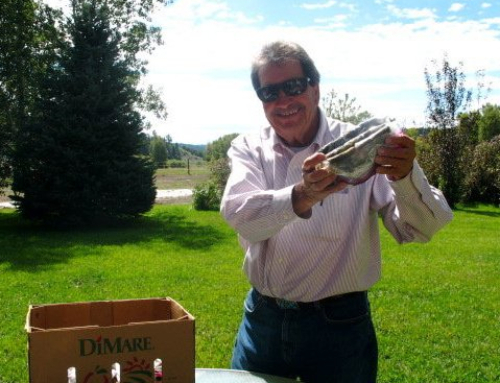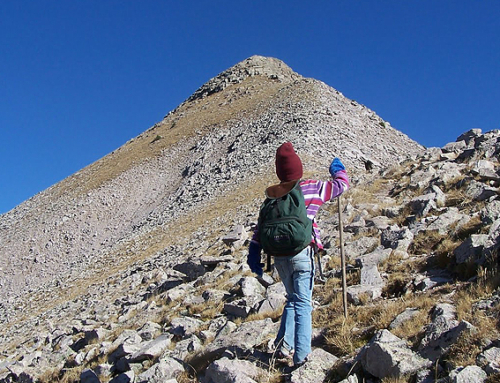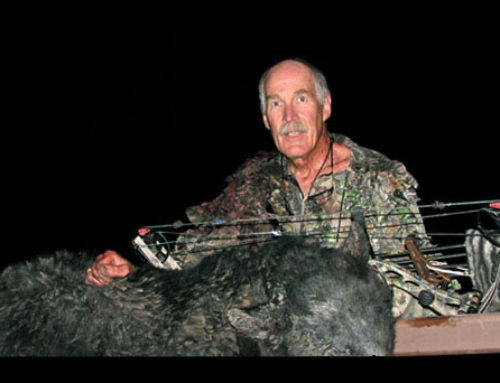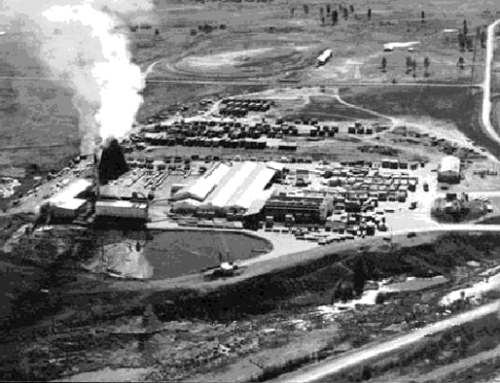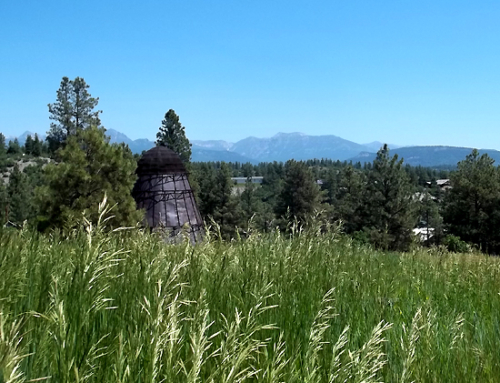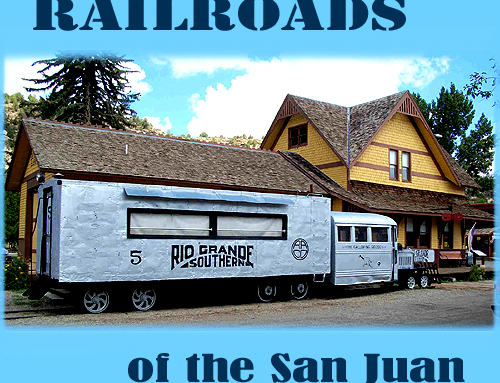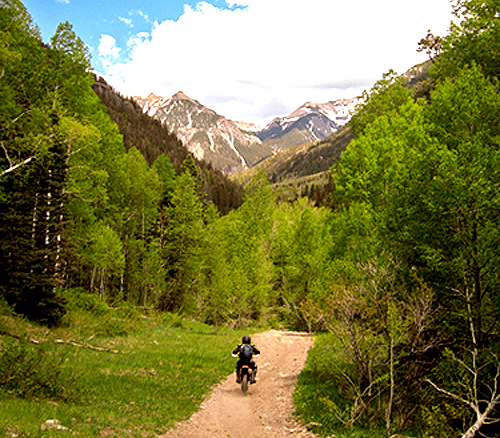
Photo courtesy: Incredible Pagosa Vacation Rentals
The following text Courtesy of Center of Southwest Studies,
Fort Lewis College
The Center of Southwest Studies, Fort Lewis College
The Old Military Road/ Elwood Pass Road
by Nik Kendziorski
An off road adventure climbing the East Fork Valley and Elwood Pass.
A road into southwestern Colorado was needed as settlers and miners began to move into the area and the military needed a road connecting Fort Garland in the San Luis Valley and, the soon to be built, Fort Lewis in Pagosa Springs to help protect these people. Lieutenant E. H. Ruffner from the Army Corps of Engineers began making several surveys for possible routes over the San Juan Mountains in the early 1870s. In 1877, Lt. Ruffner conducted a survey from Fort Garland to the Alamosa River and on up to the Continental Divide, over Elwood Pass and down the East Fork of the San Juan River to Pagosa Springs. Lt. Ruffner also surveyed a route further to the south over Cumbres Pass in 1877. According to John Motter, in an 1878 report, Lt. Ruffner recommended against following the route over Elwood Pass and down the East Fork of the San Juan, even though the route was the shortest it did not justify the costs to construct the road through such difficult terrain (Motter no date:47).
Construction of a wagon road that followed the route over Elwood Pass and down the East Fork of the San Juan River was begun by the Army in 1879. According to John Motter, the Army was appropriated $10,000 to construct the wagon road in the spring of 1879 (Motter no date:69). For southwest Colorado, the road was to be a major transportation and communication corridor with the San Luis Valley and the rest of the state. Construction began on the eastern portion of the road first and progressed westward toward Elwood Pass and then began to make its way down the East Fork valley. However, before the wagon road was completed, the Army had moved Fort Lewis from Pagosa Springs to a location west of Durango called Hesperus. The Army abandoned construction of the road and records are not clear as to who may have completed the road into Pagosa Springs, but it may have been finished by early 1880 (P.G. Duke, Gary Matlock and Rose Marie Havel 1985:34).
Around this same time period a route was being opened over Cumbres Pass to the south in 1877 and the Denver and Rio Grande railroad reached the mining communities in the San Juan Mountains in 1881 by way of the same pass. The opening of these routes and the move of Fort Lewis to Hesperus created a situation where the East Fork route appeared to be obsolete before it was really utilized. Following its abandonment by the Army, the Old Military Road came under the maintenance of the State of Colorado. By most accounts from the sources researched, the Old Military Road was a difficult road to travel, in need of repair most of the time and little used. However, early newspaper accounts from Pagosa Springs reported the hope that the road would open up resources in the Pagosa Springs area, if it were maintained properly by the state and counties.
Summitville is now a ghost town and a great visit.
Reading newspaper accounts from 1890 through 1900 provided reports on the use of the road and even its condition, however, most of the accounts from The Pagosa Springs News talk about the opportunities that an improved and maintained road would provide for the region. The first report stated, “If the wagon road up the San Juan river had been built as it should have been there would now be a great activity at Elwood camp (The Pagosa Springs News, 26 May, 1892).” Many accounts regarding the Elwood mining camp were full of optimism and stated that Elwood would become one of the great mining camps in the state. Of course, a lot of this optimism was dependent on reliable transportation and passable roads. An example of this belief appeared in the paper in the middle of 1892, “Prospectors are thick at Elwood, and capitalists are also beginning to make their appearance there. The News predicts that Elwood will be one of the great camps in the state. Should the state wagon road be constructed this year it will help the camp wonderfully… (The Pagosa Springs News, 14 July, 1892).”
Accounts in the published sources used for research wrote that the State of Colorado took over the Old Military Road shortly after the Army abandoned it in 1879 (P.G. Duke, Gary Matlock and Rose Marie Havel 1985:34,103; Motter no date:39). However, reports in the newspaper from 1893 show that it was not until that year that a state road was completed. The first account on September 8, 1893 describes how the state wagon road is having work done on it and is not open for travel and then a later report states, “The state road is now completed, and the wisdom of the measure and of the men who urged its adoption is apparent in the increased traffic and reduction in tariffs between Antonito and Pagosa Springs. It will result in the development of a number of wealth producing resources in Archuleta county now lying idle and unimproved”(The Pagosa Springs News, 24 November, 1893).” It is not clear from these reports if the state had been maintaining the road from the time the Army abandoned it or if it took the state until 1893 to do anything about the road. The question of how the road was maintained becomes more clouded due to newspaper reports from 1898.
One of the more exciting accounts highlights how dangerous it was for those who traveled the road. Joe Mann, a homesteader and miner from the Elwood area, reported to the newspaper “that a four horse team bringing freight over from Del Norte for Mr. Hatch went over the bank near timber hill and smashed things up in general. The load included several hundred pounds of dynamite but it did not explode, but things were wrecked in general. Rio Grande county will no doubt have a lawsuit on hand. Perhaps in the future that county will pay some attention to the road on this side of the range (The Pagosa Springs News, 4 November, 1898).” In the same edition, the newspaper took time to scold the county that did not maintain their section of the road, “The road between here and Summitville is well worked in Archuleta and Mineral counties, but you can tell by its bad condition when you strike the Rio Grande county line. That county should keep up its share of the road (The Pagosa Springs News, 4 November, 1898).” The sources consulted for this report stated that the State of Colorado maintained the road until the Wolf Creek Pass road was constructed in 1916. It is not clear if Colorado abandoned the road and the counties took over maintaining the sections that ran through their boundaries or if there was an agreement to maintain the road together.
The following video will give a good idea of the type of road in the area. Expect a lot of rocks. This road should not the done in rainy weather.
These were not the only accounts regarding the use of the road over Elwood Pass. There were many brief reports in the newspaper stating that individuals were heading from Pagosa Springs to their mining claims near Summitville or making their way into the San Luis Valley to the communities of Del Norte, Monte Vista, Alamosa and other communities in the state. The mining camp of Elwood during the 1890s had a number of mines and some attempted to ship ore via the state road and there were homes and a business located at the camp as well. However, by the turn of the century, it appears that mining in the area was dying and people began to move out of the East Fork valley. In a phone conversation with August William Warr on November 6, 2001, Mr. Warr stated that his parents, Wade and Ella Warr, and Joe Mann were one of the last year round residents in the East Fork valley between 1909 and 1912. Wade and Ella would use the state road to go into Pagosa Springs in October using two wagons to get their winter supply of groceries for operating the Black Diamond Mine. August Warr stated that they didn’t get back into town until the following April because the road was impassable due to winter snow. A devastating flood in 1911 washed out the road into the valley of the East Fork of the San Juan River. Following the flood that destroyed the road, it took 27 packhorses to carry the Warr’s winter supplies to the cabin site. The devastating effects of the flood had made it extremely difficult for transportation in the valley and in the summer of 1912 the Black Diamond Mine was closed. Joe Mann also died in 1912 and it appears that the East Fork valley no longer had any year round residents or a usable road.
Prior to the flood of 1911, the region had been clamoring for the state to build a new road that could be used year round. John Motter states in his book, “One more step was needed before Pagosa Country could completely enter the modern era. She needed a good all-weather road to the north and east for auto traffic. Indeed, the need for an outlet was felt by the entire San Juan Basin (Motter no date:131).” The state highway department began to study the issue and intended to follow the same route that went up the East Fork of the San Juan River and over Elwood Pass. State Highway Commission engineer J. E. Maloney wrote an account of the initial stages of planning for the new road up the East Fork. It began with a trip in 1910 through the region and by 1913 a Construction Committee was formed to begin survey work and other planning. In 1914, J. E. Maloney and others were returning to Pagosa Springs after surveying routes and they traveled through the area of Wolf Creek Pass. Mr. Maloney surveyed and kept notes regarding this route and after some discussion he strongly advised the selection of the Wolf Creek route. Eventually this route was chosen and by 1916 the Wolf Creek Pass road had been built (Motter no date:133). Travelers no longer needed the road through the East Fork of the San Juan River.
This was not the complete end for the road. In 1907 the Colorado Telephone Company constructed a important telephone line through the East Fork. The road through the valley would need to be minimally maintained in order for the company to service the line. An article appeared in the November 1, 1907 issue of a local Pagosa Springs newspaper that described the progress of the telephone line as proceeding nicely. In 1911 the Colorado Telephone Company transferred the line to the Mountain States Telephone Company and the line was operated by Mountain States until 1955. Jud Thiele, who owned the Pagosa Springs Telephone Company, purchased a section of the line from Platoro to Yellow Jacket in May of 1955. Mr. Thiele then sold the line to Oswald Reeves and his family over a year later in October 1956. It was shortly after this last purchase that the telephone line up the East Fork was discontinued and the wire was salvaged. However, the poles that held the line can still be found along sections of the original road (P.G. Duke, Gary Matlock and Rose Marie Havel 1985:103-104). Mr. Motter states that at some point a natural gas pipeline was laid along the route of the East Fork road. He does not provide any date for its construction, but it is still there today.
From its construction in 1879 until the present, the Old Military Road through the East Fork of the San Juan River has continued to be a transportation and communication corridor. The natural gas line continues to transport its product and today tourists and hunters travel the road in a landscape that has not changed much since the first settlers and miners traveled through the valley. Many people are on the road to enjoy the scenery or are searching for big game and they don’t realize or see the important history of this corridor. It was an important link to the outside world for the people of southwestern Colorado. Evidence of this history has been washed away by the flood of 1911 and other subsequent floods and by the ravages of time. Some of the structures important to this history have been destroyed by people using logs from cabin and mine sites for their campfires. It is important that this historic corridor is preserved and its history documented for future generations.
Elwood Mining Camp Site, Rio Grande National Forest, by Nik Kendziorski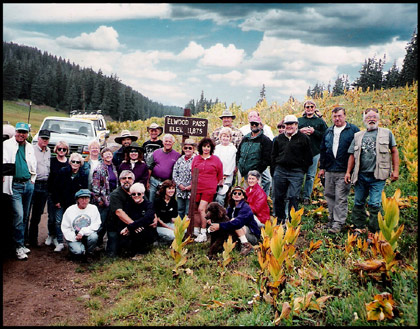
The Elwood mining camp would be “one of the great camps in the state” (The Pagosa Springs News, 14 July 1892). For the next several years the paper continued to “predict” that Elwood would rise to greatness. However, Elwood never fulfilled this prediction. Unlike its well-known neighbor, Summitville, Elwood never had a great rush of people or great discoveries of valuable minerals. In researching the history of the camp, it apparently wasn’t written up in any books or geological papers. Therefore, most information regarding Elwood for this report comes from newspaper reports.
The mining camp of Elwood was situated on the East Fork of the San Juan River “near the mouth of Bear Canyon” (San Juan and Montezuma National Forest History, Vol. 1, 1905-1971:44). The camp sat near Crater Creek and Bear Creek and on the Forest Service map was located in Section 31, T. 37 N, R. 3 E. Elwood was situated in the Crater Creek Mining District. It is unclear as to the actual beginning of the mining camp at Elwood, but apparently people began to prospect the area in the early 1890s. According to Mr. August William Warr, there was a certain type of quartz that had been found in the Summitville area that signified the presence of valuable minerals. The area of Elwood was approximately 10 miles southwest of Summitville, so there were prospectors combing the mountains from the Summitville area. Apparently, some prospectors found the same type of quartz in the area of the East Fork of the San Juan River. The prospectors figured that this area would also have gold (Phone conversation with August William Warr, 6 November 2001).
It is difficult to pinpoint the beginning of the Elwood mining camp. However, using familiar names that appeared often in the newspaper accounts and the language of the reports, it is possible to surmise a start to Elwood as an organized camp. Many of the same names appeared in the newspaper accounts regarding Elwood throughout the ten-year period that I was able to research. One of the people mentioned on numerous occasions with ties to Elwood was Jacob Lane. The paper reported in August of 1891 Jacob Lane came down from his camp to leave a specimen of ore (The Pagosa Springs News, 20 August 1891). It makes no mention of the camp of Elwood. This is the first mention of the area that would become Elwood. From early 1890 until August of 1891, there is no mention of the Elwood mining camp in the newspaper. Josiah (Joe) Mann is another individual who is mentioned quite often in subsequent reports regarding Elwood. Joe Mann lived on a homestead on the East Fork of the San Juan River and it was often reported in later accounts that Joe Mann was down from Elwood. The newspaper reports that “Josiah Mann was down from the hills last Friday” (The Pagosa Springs News, 19 May 1892). The account from 1892 continues by stating that “extensive work will be done on the San Juan this season in developing mines” (The Pagosa Springs News, 19 May 1892). Both accounts don’t mention the mining camp of Elwood. The area may have acquired the name by that time, but it was not being widely associated with accounts that were coming from the area.
The first Wolf Creek Pass.
One week later the paper reported that Chicago capitalists were scouting mining property along the San Juan River. In the same paper we have the first mention of the camp at Elwood. It lamented that if the wagon road up the river had been built as it should have been, “there would now be a great activity at Ellwood camp” (The Pagosa Springs News, 26 May 1892). Therefore, it appears that Elwood found its beginning as an “organized” mining camp during the 1892 season. We also learn that reliable transportation was vital to the development of a camp. This was an issue that plagued the mining camp of Elwood all through its existence.
The summer of 1892 brings a flurry of activity to the Elwood area and there are numerous accounts in The Pagosa Springs News touting the discoveries in the mines at the camp. A number of accounts reported that a prospector had brought in a “fine specimen” of ore from their mine and that prospects for Elwood were looking good. Men like Bob Young and Jacob Lane were mentioned often as bringing in “fine specimens” and reporting news from the camp. Only one mine is mentioned by name in the accounts from 1892 – the Mineral Wonder. 1892 also brought accounts that prospectors “are thick at Ellwood and capitalists are also beginning to make their appearance there” (The Pagosa Springs News, 14 July 1892). Other reports stated that prospectors were “numerous” and that capitalists were “expected” in camp at any given day. A man by the name of Henry Moore claimed that he had made a strike that “he thinks will make him wealthy the rest of his days” (The Pagosa Springs News, 15 September 1892). The newspaper itself did its best to promote the camp by boasting that “important mining transactions will take place in the near future which will bring Ellwood to the front as one of the best mining camps of the state” (The Pagosa Springs News, 29 September 1892). Great activity, promoting and boasting were underway in 1892 at the mining camp of Elwood.
When one crest the Continental Divide on Elwood Pass the little summer only town of Platoro in a turn south. It has a restaurant and cabins for rent.
Promoting and boasting were not the only activities in the camp. Reports were brought in to the paper that cabins were being erected, roughly twenty five people were in the camp and that some of the prospectors were preparing to stay through the winter (The Pagosa Spring News, 8 September 1892, 15 September 1892). The newspaper accounts of 1892 were full of hope, promise and predictions.
The winter of 1893 started off with the prediction that Elwood would become a “little Creede boom” and that the camp would be given a “high toned” name to befit its promise as a mining community. This same account also provided a glimpse into the ethnic makeup of the camp. The paper stated, “No one is barred from this camp except Mexicans.” It continued with a peculiar paragraph that referred to African American prospectors, “The colored population in this camp will darken the moon in the month of May, causing an eclipse” (The Pagosa Springs News, 6 January 1893). It is apparent that African American prospectors were to come to Elwood in May of that year, but with such an unusual statement it is unclear as to how they were accepted.
August of 1893 brought the first big strike in the Elwood mining camp. The headline for the column read, “RICH STRIKE In the Robert Burns at Elwood” (The Pagosa Springs News, 18 August 1893). Bob Young and several other proprietors held interest in the mine. It was reported that the tunnel was roughly 125 feet in length at the point where the vein was cut. The exact value of the strike was not known at that time, but in usual fashion it was touted as being valuable and hopes ran high that this strike would spur further development in the camp. The paper felt for sure that Elwood would rival Creede and any other camp in the state. Excitement was so great that it was reported the following week that Jack Young and W. H. McCormick, part owners in the Robert Burns mine, had accidentally burned down their assaying office (The Pagosa Springs News, 25 August 1893). The excitement over the Robert Burns strike was short lived. The newspaper reported in early September that Bob Young had visited the office and stated that the find at the mine did not meet expectations (The Pagosa Springs News, 8 September 1893).
See an adventure on Elwood Pass here.
The disappointment of the Robert Burns strike apparently didn’t dampen spirits or stop development of more mines. Aside from the occasional report from Elwood, the newspaper also ran columns with headlines like “Elwood Mines” or “Elwood Camp”. The columns provided more than just the short description or anecdote regarding Elwood. The Pagosa Springs News wrote such a column in mid September that provided some details about other mines in the Elwood camp. Charles H. Freeman brought news that interest in Elwood was on the increase. Young Brothers & Co. had completed $400 of development work on their East Boston Lode. The paper also lists the owners of the Robert Burns as Jack Young, Robert Young, Joe Miller, W. H. McCormick and a man identified only as McMahan. The Robert Burns had completed 300 feet of development work on its upper level.
Also, the owners had completed 200 feet crosscut and 50 feet on the vein. The owners were reported to have “a four foot body of ore averaging $28 in silver, $15 in gold and 47 percent of lead” (The Pagosa Springs News, 22 September 1893). Other mines mentioned in the report included the Big 6 Lode owned by Reagan and McMahin, the Red Bird worked by Joe Miller and Mr. Clendaniel, and the Silver Lake owned by Jacob Lane & Co. A paragraph in the same paper listed the owners of the Silver Lake as “Jake Lane, Taylor, Freeman, and Hallett” (The Pagosa Springs News, 22 September 1893). The report stated that six men were at work on the mine. The newspaper concluded the paragraph by raising its level of promotion for the camp by stating “that Elwood must be the great camp of the southwest” (The Pagosa Springs News, 22 September 1893).
The late fall of 1893 brought one more important development to the growing camp at Elwood. In late October a man by the name of D. P. Hatch arrived in Pagosa Springs from Chicago. He brought with him ten tons of milling and concentrating machinery, including a 7,000-pound boiler, that was destined for Elwood (The Pagosa Springs News, 27 October 1893, 10 November 1893). By mid December the machinery was in place and expectations that Elwood would soon experience a boom were running high. The newspaper felt this new development and the completion of the state road that passed through Elwood was exactly what was needed to move the camp forward. The individual miner was not going to bring Elwood into prominence. Capitalists with money and machinery were needed along with reliable transportation routes. D. P. Hatch had brought machinery and capital and the state had improved the road through the region. Elwood was now set to grow and prosper.
The Elwood Mining Company headed by D. P. Hatch had its mill in place and the newspaper felt that Elwood was ready to open up immense bodies of ore in 1894 that would “put the ‘La Platas’ to the blush” (The Pagosa Springs News, 1 June 1894). Minorities were also making it into the papers this season. The paper reported the “colored” gentlemen were working their mining property in Elwood. The miners were from Durango and they eventually formed the African Co. The paper again used an odd reference in describing the African American population of the camp by reporting, “The African Co. is pounding away at the Uncle Dick, and at the same time building accommodations for any friends who may visit them from the Nile” (The Pagosa Springs News, 1 June 1894). The important message from this account is that things were going well enough at the mine to build a permanent structure to house themselves and their workers. It was also a sign that Elwood was gaining further permanence as a community.
Several new names appeared in accounts on the mines at Elwood in 1894. F. E. Tyler is one that gets mentioned several times and in subsequent reports over the next several years. Others were George McGee, E. M. Taylor, and J. H. Hallett. Outside of the mines, there was great activity in the development of Elwood as a community and not just a rough mining camp. In July of 1894 it was reported that F. E. Tyler was building a large house in Elwood (The Pagosa Springs News, 20 July 1894). No further description was given regarding the house, but it does not appear that it was a crude cabin that one might find in a mining camp. This was indicative of the success that Mr. Tyler was having. According to reports, he was having success in his mines and in the summer of 1894 he possibly established the first and only advertised business in Elwood. In September F. E. Tyler began running an advertisement in The Pagosa Springs News. The ad stated, “Frank E. Tyler, Mines & Mining, Fully Equipped Assay Office and Chemical Laboratory, Ellwood, Colorado, Specimens for assay may be left at this office” (The Pagosa Springs News, 21 September 1894). The ads ran for several months in the paper and then disappeared. It is not clear whether F. E. Tyler got out of the business or just stopped advertising in the paper and relied on word of mouth.
Two other important events to note also occurred in late 1894. First, George McGee announced he was getting married in August. The August 24, 1894 edition of the paper announced, “Mr. George McGee of this place and Miss Hattie Hancock of Aspen were married by Judge D. L. Egger at the San Juan hotel on the evening of August 21, 1894.” The couple then took up residence in Elwood and an element of domesticity was added to the camp. The other important event to note occurred in October of 1894. The paper never recorded how many people were living in Elwood, but apparently it warranted the establishment of a voting precinct in Elwood in 1894. The report stated the precinct was in Mineral County and that “Mrs. Maud Garvin and Mr. F. E. Tyler were appointed election judges” (The Pagosa Springs News, 19 October 1894). Being able to vote in Elwood was short lived. In August of 1895 it was reported that those wishing to vote would have to travel to Wagon Wheel Gap in the fall (The Pagosa Springs News, 2 August 1895). These reports presented confusing information.
All other sources consulted for this report had placed Elwood in Rio Grande County. Based on maps and other source material, Elwood was situated near the line dividing Mineral and Rio Grande counties. The issue was apparent in a report from late August of 1895. The Pagosa Springs News reported, “Elwood will probably remain in Rio Grande county according to the surveyor general’s letter to Mr. Tyler, until a new survey is made and approved” (The Pagosa Springs News, 30 August 1895). No other references to the issue or how it may have happened have been found during research. Based on current sources and published materials, Elwood was eventually declared to have been in Rio Grande County.
The first major headline for Elwood in 1895 stated, “$110 Per Ton” (The Pagosa Springs News, 19 April 1895). The Robert Burns mine had encountered an ore body valued at $110 per ton on the dump. At this point, F. E. Tyler had begun leasing the Robert Burns from the owners previously mentioned in this report. According to the report Mr. Tyler was offered a good price for the ore from the smelters in Durango. It was estimated that it would cost $20 per ton to ship to Durango, leaving a profit of $90 per ton. The report compared this to the $40 per ton coming from the Creede mines and the usual boasting continued that Elwood would become a great camp (The Pagosa Springs News, 19 April 1895). In June, a mill run of the ore had returned 134 ounces of silver per ton and some lead and gold. Mr. Tyler hauled the ore to Amargo and then shipped it to the smelters in Durango (The Pagosa Springs News, 14 June 1895). Mr. Tyler changed his shipping plans in July and had the ore hauled to the South Fork station just west of Del Norte and then shipped to Pueblo. He claimed that his shipping costs would drop from $22 per ton to $10 per ton by shipping to Pueblo rather than Durango (The Pagosa Springs News, 19 July 1895).
July also brought the prospects that a Post Office would soon service the Elwood community. By October, details had been worked out and Robert Young was appointed postmaster and the Post Office was supplied from Summitville (The Pagosa Springs News, 18 October 1895). According to Place Names of Colorado, Elwood had a post office in 1882-1883 and from 1895 through 1899. I have been unable to determine if the 1882-1883 date refers to an established camp or town of Elwood. Nonetheless, with the established post office in 1895, it appeared that Elwood was improving and could one day live up to the predictions.
Late August of 1895 brought another substantial report from the mines of Elwood and the column was titled “Elwood Notes”. Forty men worked at the camp in 1895, with some on the Robert Burns and the East Boston Lode and the rest worked for themselves. Jacob Lane worked the Lake lode with good results. Mr. Hatch and the Elwood Mining Company worked the East Boston tunnel and Quartz Mountain. The latter had been previously owned by the Young brothers and named Rob Roy.
Trouble occurred between the owners of the Robert Burns and Mr. Tyler who had been leasing from them. Apparently the owners refused an extension of bond. Mr. McMahn and Mr. Regan had also brought a suit against the owners of the Robert Burns mine. The suit was to be heard in November by the courts. It is not clear why the suit was brought or what the outcome was at the time. Activity on the Robert Burns must have been significant because a couple by the name of Mr. and Mrs. Hartbauer provided bed and board for the miners (The Pagosa Springs News, 30 August 1895). The rest of 1895 appeared quiet and reports were not as numerous. One small report in October had F. E. Tyler working a sixty-foot tunnel on the Good Hope mine in Elwood (The Pagosa Springs News, 4 October 1895).
News regarding Elwood in 1895 ended with a mining application in The Pagosa Springs News on December 6, 1895. The application stated:
Mining Application No. 1105, Mineral Survey No. 9932. U. S. Land Office, Durango, Colo., Dec. 3, 1895. Notice is hereby given that John C. Young (for himself and co-owners, Robert Young, Joseph Miller, W. H. McCormick and George McGee), whose post office is Pagosa Springs, Colorado, has made application for a patent for 1,500 linear feet on the Robert Burns Lode, bearing silver, with surface ground 300 feet in width, situate in Crater Mining District, Rio Grande county, State of Colorado, and described in the plat and field notes on file in this office, as follows, viz:…
Please see the newspaper for the full description of the mining application. It describes in detail the dimensions of the claim. This was the only application found in the newspaper regarding claims in Elwood.
There is a gap in the sequence of years and 1896 is not included in the microfilm at the Center of Southwest Studies. The sequence starts again in 1897 and continues until 1900. From 1897 until 1900, the reports and enthusiasm from Elwood appear to diminish. The paper no longer reports bold predictions for the camp and headlined columns are no longer appearing on a regular basis.
The only major activity in 1897 was recorded in August and September. The Silver Lake tunnel, owned by Jud Hallett and Charles Freeman, reported two assays. The first one showed 324 ounces of silver and $4 in gold and the other produced 260 ounces of silver and $2 in gold. It was believed that the Silver Lake would be a shipper before the end of the season (The Pagosa Springs News, 13 August 1897, 3 September 1897). D. P. Hatch continued to work in Elwood and a man named John Williams worked his individual mine claim. Few accounts of the mines were found for the 1898 season as well. Reports mentioned that men like C. H. Freeman and George Ober were looking at Elwood and Summitville mines. The only major news was reported in September when the Elwood Mining Company sold their mining interests in Elwood to the Cosma Tunnel Company. The latter company was composed of “eastern capitalists” (The Pagosa Springs News, 29 July 1898, 30 September 1898). The only account from 1899 reported, “The Elwood mining company, which recently purchased the D. P. Hatch mining claims at Elwood, will commence developing the same this fall. The company is composed of Chicago capitalists and W. L. Shiverick has assumed the management of the concern” (The Pagosa Springs News, 9 September 1899). By all accounts, activity began to decline in Elwood and by 1900 there were no reports or accounts from the Elwood mining camp.

